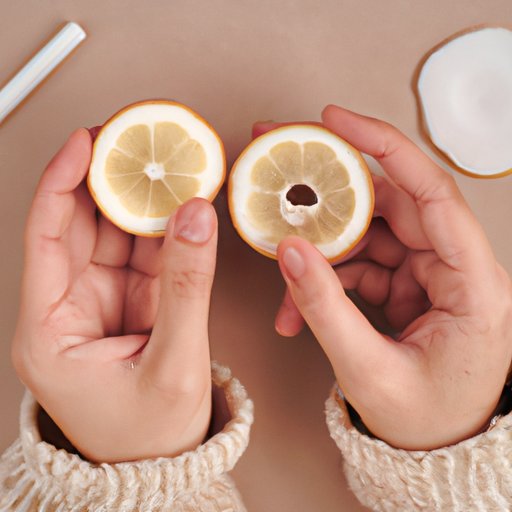
Introduction to Styes
A stye, or hordeolum, is a common condition that affects the eyelid. It is caused by a bacterial infection that occurs when the oil glands in the eyelids become clogged and infected. Styes can be painful, red, and swollen. Fortunately, most styes can be treated at home with natural remedies or over-the-counter treatments. In this article, we will explore the best ways to cure a stye, as well as the dos and don’ts of dealing with this pesky condition.
5 Natural Remedies to Cure a Stye
Natural remedies are often very effective in treating styes. Not only are they usually gentler on the skin, but they can also be more cost-effective than buying over-the-counter treatments. Here are five natural remedies that can help cure a stye:
1. Using a Warm Compress
Applying a warm compress to the affected eyelid can help reduce inflammation and encourage the stye to drain. Soak a clean cloth in warm water and place it over the infected area for 10-15 minutes, reheating the cloth as necessary. Repeat this process three to four times a day until the stye has healed.
2. Applying a Tea Bag
Tea contains tannic acid, which has antibacterial and anti-inflammatory properties. Applying a warm, damp tea bag to the stye can help reduce inflammation and encourage the stye to drain. Simply boil a tea bag in water, squeeze out the excess liquid, and place it over the infected area for 10-15 minutes. Repeat this process three to four times a day until the stye has healed.
3. Using Aloe Vera
Aloe vera is known for its antibacterial and anti-inflammatory properties, making it an excellent natural remedy for styes. Simply apply fresh aloe vera gel to the infected eyelid three to four times a day until the stye has healed.
4. Using Coriander Seeds
Coriander seeds contain antimicrobial compounds that can help fight off the infection causing the stye. To use coriander seeds as a natural remedy, boil one teaspoon of coriander seeds in water, strain the liquid, and use a clean cloth to apply it to the infected eyelid. Repeat this process three to four times a day until the stye has healed.
5. Honey and Water Mixture
Honey is a natural antibacterial agent that can help fight off the infection causing the stye. Mix one teaspoon of raw honey with two tablespoons of warm water and use a clean cloth to apply it to the infected eyelid. Leave it on for 15-20 minutes before rinsing off with warm water. Repeat this process three to four times a day until the stye has healed.
Quick Fixes to Get Rid of a Pesky Stye
If natural remedies aren’t doing the trick, there are several over-the-counter treatments that can help cure a stye. Here are some of the most effective options:
1. Over-the-Counter Antibiotic Ointments
Antibiotic ointments such as Bacitracin, Neosporin, and Polysporin can help fight off the bacterial infection causing the stye. Apply a small amount of the ointment to the affected eyelid three to four times a day until the stye has healed.
2. Prescription Antibiotic Drops
If the stye is particularly severe, your doctor may prescribe antibiotic eye drops such as Tobramycin, Ciprofloxacin, or Erythromycin. Follow your doctor’s instructions carefully when using these medications.
3. Over-the-Counter Pain Relievers
If the stye is causing discomfort, over-the-counter pain relievers such as acetaminophen or ibuprofen can help. Follow the instructions on the package carefully and do not exceed the recommended dose.
4. Steroid Medications
Steroid medications such as Prednisolone or Dexamethasone can help ease inflammation caused by the stye. However, these medications should only be used under the guidance of a healthcare professional as they can have side effects.
The Dos and Don’ts of Dealing with a Stye
When dealing with a stye, it is important to practice good personal hygiene to prevent further infection. Here are some dos and don’ts to keep in mind:
Dos
- Clean your eyelids regularly with a mild soap and warm water.
- Use warm compresses to reduce inflammation and promote drainage.
- Take any prescribed medications exactly as directed by your doctor or pharmacist.
Don’ts
- Do not touch or squeeze the stye, as this can cause the infection to spread or become worse.
- Do not share towels or pillowcases with others, as this can spread the infection.
Exploring the Causes and Cures of Styes
Styes are typically caused by a bacterial infection of the oil glands in the eyelids. However, there are several factors that can increase your risk of developing a stye:
Causes of Styes
- Glands in the eyelids that are blocked or infected
- Poor hygiene, such as not cleaning your eyelids regularly
- Health conditions such as blepharitis or rosacea
If natural remedies and over-the-counter treatments aren’t working, your doctor may recommend one of the following cures:
Cures for Styes
- Antibiotic medications
- Surgery to drain the stye
- Home remedies, such as those listed above
Preventing Future Styes: An Ongoing Toolbox
As the saying goes, an ounce of prevention is worth a pound of cure. Here are some tips for preventing future styes:
Importance of Prevention
Prevention is key when it comes to avoiding styes. Practicing good hygiene and avoiding potential triggers can go a long way in preventing future infections.
Tips and Recommendations for Good Eye Hygiene:
- Cleanse your eyelids regularly with a mild soap and warm water.
- Avoid wearing eye makeup or sharing makeup with others.
- Avoid touching or rubbing your eyes.
Conclusion
Styes can be uncomfortable and unsightly, but they are usually fairly easy to cure with natural remedies or over-the-counter treatments. If you experience frequent styes or have a stye that does not improve with at-home remedies, contact your healthcare provider for further evaluation and treatment. By practicing good personal hygiene and taking steps to prevent future infections, you can help keep styes at bay.




